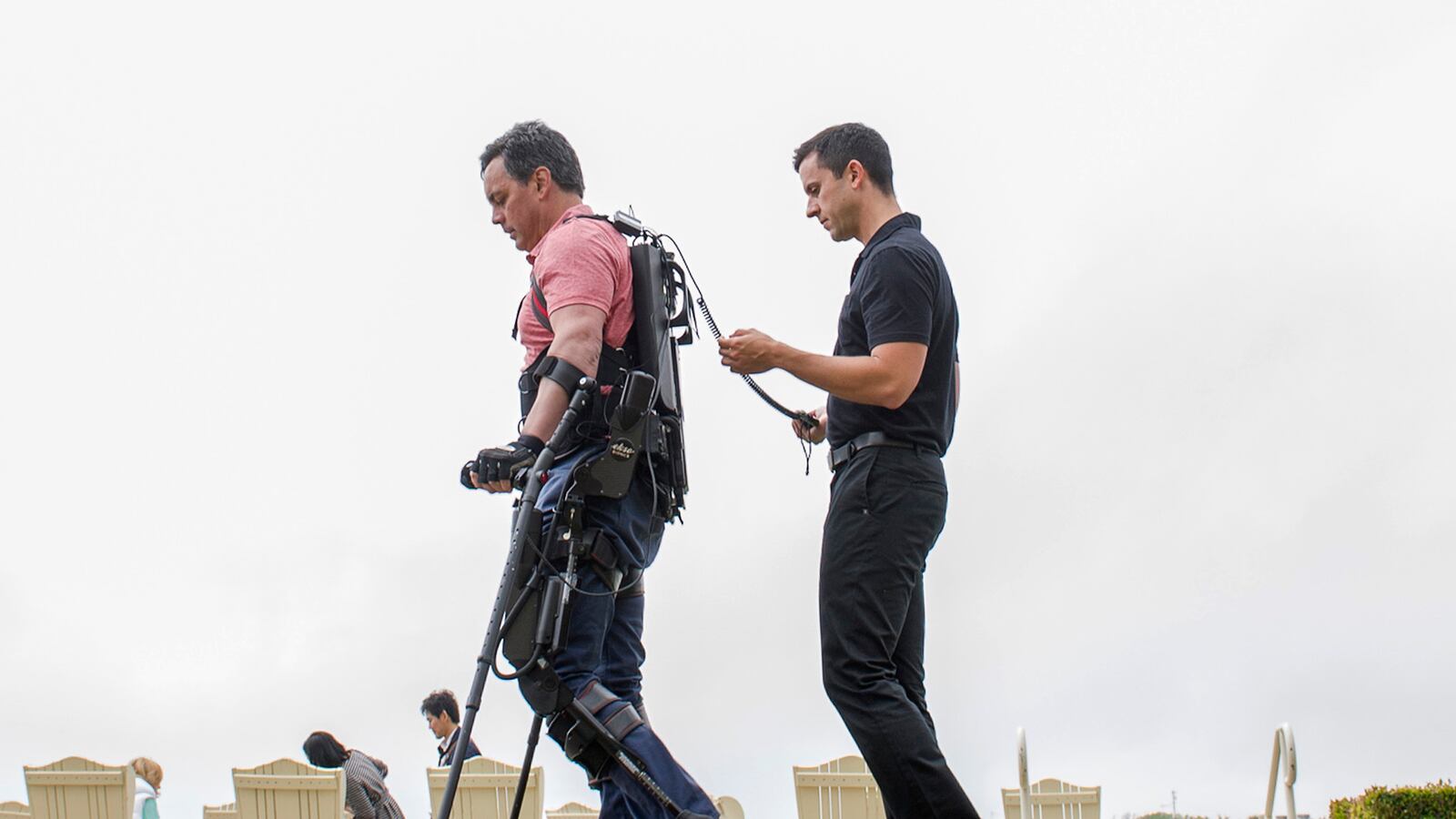The FIFA World Cup in Brazil is full of last minute-headers, powerful kicks, and even the occasional bite. However, there is one kick in particular that stands out: the young Brazilian who struck the first kick of the World Cup, paraplegic in a futuristic exoskeleton. It’s a symbol of how far neuroscience, medicine, and engineering has come, and it is nothing short of awesome.
Dr. Miguel Nicolelis‘ work at Duke University made the exoskeleton in Brazil possible. The term exoskeleton refers to the hard outer shell found on insects and certain animals like grasshoppers and crabs. This is contrasted with the human skeletal system, which is classified as an endoskeleton. Researchers hope that these devices can restore walking to those who have lost that ability. Military applications of these devices, which allow combat soldiers to carry heavier loads in the field, are also an active area of research and development.
Take for example, ReWalk, a similar exoskeleton created by Argo Medical Technologies, which received Food and Drug Administration (FDA) approval earlier this week. Today anyone (with the budget) can buy a ReWalk Robotic Exoskeleton for roughly $85,000. This device underwent clinical trials where it demonstrated both physiological (muscle strength and stamina) and psychological benefits for users.
ReWalk holds potential for many of the estimated 1.6 million Americans who use wheelchairs and the roughly 42,000 American military veterans living with a spinal cord injury. Individuals who have lost the ability to stand and walk suffer from many challenges in addition to the loss of mobility. The sedentary state imposed by paralysis leaves these individuals at risk for additional medical conditions, such as negative changes in body composition, increased risk for diabetes, cardiovascular disease, and skin ulcers.
A key concept with an exoskeleton is that it restores control to the user. Patients regain the ability to adapt to their surroundings, rather than having to make use of an environment constructed for wheel-chair use.
The exoskeleton in Brazil was described as “mind-controlled,” but it is important to understand exactly what that means. Cells in the brain and spinal cord—neurons—communicate via electric signals. Scientists measure these electrical connections and, over time, are starting to understand the incredibly complex code that neurons use to communicate with one another. As this understanding continues to grow, so will the ability to crack the code to recapitulate the outputs of these signals—one of which is coordination of movement.
ReWalk is different in that it does not draw directly on signals from the brain. It consists of footplates, exoskeletal extensions on each leg, mechanical knee joints, a pelvic band, a tilt sensor that measures trunk forward tilt angle, a backpack which stores the batteries, the computerized control system, and a remote-control wristband. The remote control contains mode selections for standing, walking, sitting, and stair up and down modes that the user can select. ReWalk requires the use of crutches to promote balance.
Many other approaches to restore walking ability to spinal cord are underway. We reported on the efforts of Dr. Susan Harkema, who is working to “wake up” dormant spinal cord neurons. Other spinal cord regeneration efforts involve using stem cells to regrow damaged or lost neurons. These approaches are critical as they strive to fix the innate issue: spinal cord damage. However, this work is still in progress.
In the interim, approaches like the ReWalk, which take on spinal cord injury from the outside, have the potential to reinvent the lives of American citizens and veterans who suffer from paralysis.





